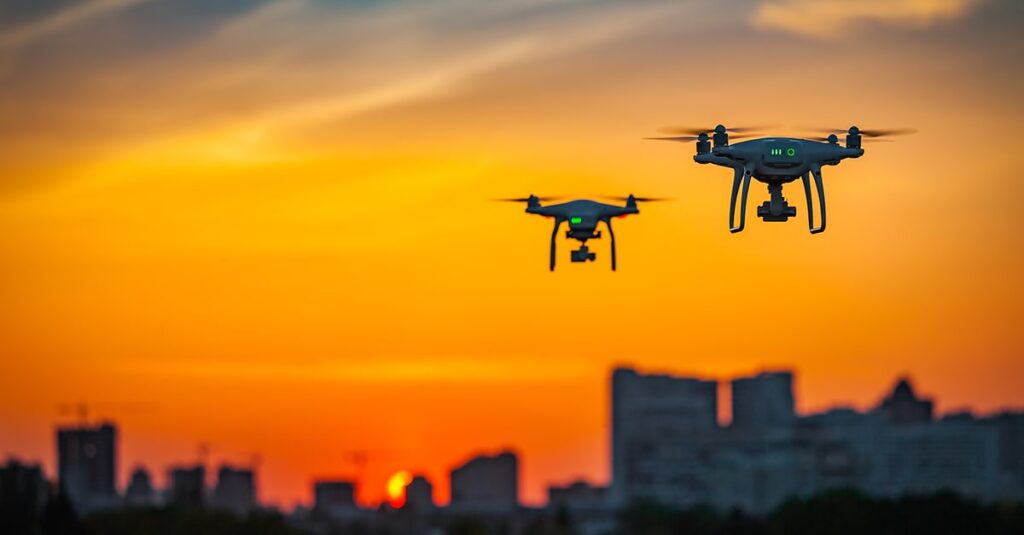As unmanned aerial vehicles (UAVs) become more common, they are of growing interest to law enforcement agencies (LEAs). Drones have been widely adopted as part of the investigative arsenal for surveillance, monitoring, and intelligence, broadening capabilities for gathering evidence and other information. At the same time, the potential for criminal use of these devices is profound, in the hands of perpetrators that could range from peeping Toms to terrorist attackers.
UAV flying platforms have become dramatically more capable and less expensive in the past several years, helping to accelerate their involvement in illegal activity. For example, it has become somewhat common for drugs, weapons, and other contraband to be illicitly carried over political borders or into prisons using UAVs. In some cases, criminal gangs have begun using drones to surveil and monitor law-enforcement officers and public officials.
The rich capabilities and services enabled by 5G networks allow cellular-connected drones to be economically deployed without dedicated infrastructure. This trend is making mobile networks more common as the control platform for communication and tracking of UAVs, as well as other Internet of Things (IoT) endpoints. In other cases, a UAV may be controlled using software on a mobile phone that is then connected to a communications service provider’s 5G network.
However, in most cases, UAVs are controlled outside the public telecommunications network, such as with short-range RF remote control devices. If at any time the UAV or an associated device (such as a mobile phone) has a unique ID that can be discovered over the network, it provides data that in some instances can be used during investigations and requested as part of lawful interception requests.
Building Lawful Intelligence on Top of Location Data
Location data is by far the most important sphere of information available from UAVs, provided by the network’s cell towers and antennas. The smaller coverage areas of individual antennas in 5G networks with other network-based capabilities make this information more accurate than previous-generation technologies. By correlating location and time data for a given UAV, it is possible to track its movements, including points of lift-off and landing as well as waypoints and time spent at any specific location.
SS8’s Intellego XT enables LEAs to conduct real-time mapping and visualization analysis for devices of interest, maintaining timelines that can be cross-correlated with other datasets, for analysis of flight paths, associations with other devices or people of interest, and so on. Patterns of behavior revealed by location information and meeting analysis, for example, may offer investigators clues about activities such as attaching or detaching payload at either end of a delivery route or surveillance of specific people or events. These approaches can reveal significant historical and predictive intelligence, deepening investigators’ understanding of events.
The Intellego XT lawful intelligence platform places communications between a UAV and people or devices within a timeline of events that helps interpret their interrelationships. Likewise, the specific data streams that a UAV interacts with at specific times may offer insight into how it is being used in that context, even when the data payload itself is encrypted or otherwise unavailable. That is, access to the actual data stream is not needed to surmise that a platform streaming audio or video content is likely being used for surveillance.
Tactical aspects of UAVs create the potential for real-time use-cases. For example, prison authorities might be able to detect attempted smuggling of contraband by identifying a known device of interest approaching an unauthorized area. If officers were able to respond immediately, they might prevent the smuggling and prevent harm, rather than just creating an investigative trail afterward. Likewise, real-time monitoring and response could reveal context about a UAV operating without permission within airspace restricted for a VIP or event.
Machines as Low-Level Perpetrators
UAVs highlight the emerging reality that devices of interest are increasingly decoupled from people of interest. With its own subscriber identity module (SIM) and potentially unknown ties to organizations or individuals, a UAV can be a significant target of investigation in its own right. Indeed, once set in motion by a human, the machine itself can commit crimes such as drug and firearm delivery or illegal surveillance.
While it is important to disrupt the human in that control loop, UAVs are analogous to lower-level actors in a traditional criminal organization, in the sense that the crimes they commit at the behest of others can be a point of entry into a larger criminal enterprise. Criminal organizations are seeking the same efficiencies from drone delivery as the retail and logistics industries, and they have moved forward faster by ignoring the regulatory hurdles that legitimate industries face. For example, the use of people as drug mules has been replaced in some cases with UAVs.
In many such cases, the most appropriate investigative path forward is for the UAV to be identified as a device of interest, enabling it to be the subject of lawful interception. Once that is done, it can be interrogated for information such as GPS logs and flight plans to provide insights about past and present actions. In addition, the UAV’s communications or proximity with other endpoints or people can be an important factor in building out an understanding of the network of relationships that lie at the center of an investigation.
Looking ahead, one can imagine UAVs being built into continuous delivery pipelines, where they are continually updated for data-driven tasks such as firearm or drug delivery, with little or no explicit control by a human operator. Such models could strain present definitions of criminal responsibility, requiring investigators to focus more on the UAV devices in the foreground than on the human actors behind the scenes.
Conclusion
As the mass deployment of UAVs continues, a growing proportion of these platforms are expected to be registered on public 5G networks. Communication service providers will therefore be carrying both control data and media payloads, such as video, that will be potential intercept targets for lawful intelligence. Intellego XT streamlines the ability of LEAs to place location and other data intercepted from UAVs into the broader context of investigations, accelerating insights. To learn how your intelligence agency can leverage existing devices to provide insight into a suspect’s behavior and relationships, contact SS8 Networks today.
About Dr. Keith Bhatia

As CEO of SS8, Keith combines his broad technical and market knowledge to advance the future of lawful intelligence. In his tenure, he has positioned SS8 as a leader in a world connected by 5G and shaped by increasing digitalization and automation. Keith is impassioned to show how technology can have a positive impact on our world.
About Mr. Syed Hussain

Mr. Hussain has spent 20 years working in the telecommunication industry and brings significant technical expertise to his role as Head of Product Management for Lawful Interception products for SS8. Mr. Hussain represents SS8 in both ETSI and 3GPP standards bodies and at technology summits.
About SS8
SS8 provides Lawful Intelligence platforms. They work closely with leading intelligence agencies, communication providers, law enforcement agencies and standards bodies. Their technology incorporates the methodologies discussed in this blog and the Xcipio® and Intellego® product portfolios are used worldwide for the capture, analysis and delivery of data for the purposes of criminal investigations.



